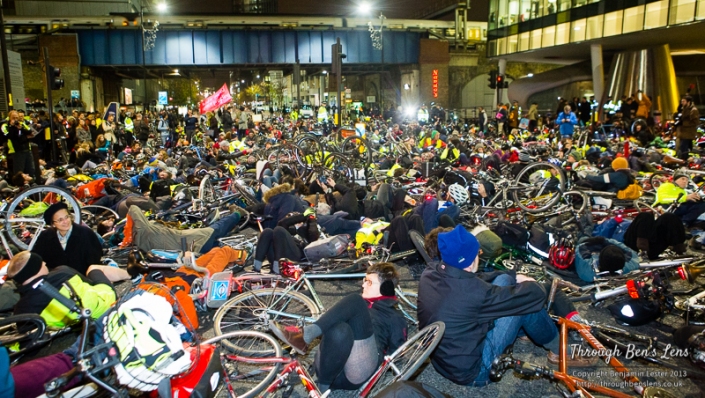Kindermoord Campaign
Oh, to be a baby aboard a Dutch bike…
Video Posted on Updated on
This delightful music video really made my morning. #
To be a baby aboard a Dutch bike is truly to be king of the world.
The song is so good that we can even overlook the Sturmey Archer gear shifter on the handlebars…
Enjoy!
Space for cycle lanes – it can be found!
Whenever I tell people about my dream of having some decent cycling infrastructure in the UK, I am frequently met with the same point about there not being enough space on British roads. The general feeling is that roads are already too narrow, and that there simply isn’t any room to accommodate the type of segregated cycle lanes that work so well on the continent.
In opposition to this, I would like to present you with a group of photos taken from Google Streetview. In the left column you have shots of roads/junctions in the UK, and in the right column you have almost identical shots of places in The Netherlands. The point of the side-by-side comparison is to show how space is used differently, and how the Dutch so sensibly choose to separate pedestrians and cyclists from cars and HGVs. The streets are so similar that they could almost be before and after photos…
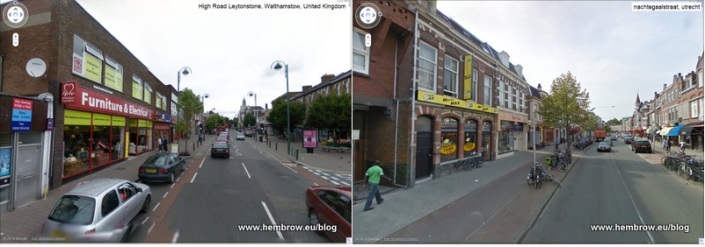
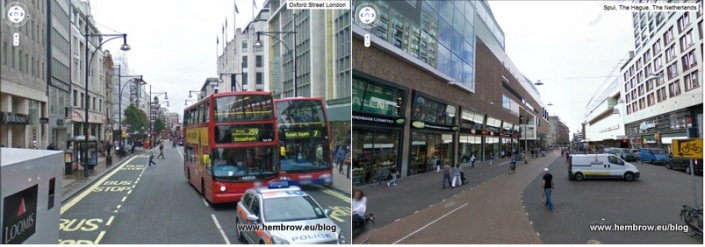
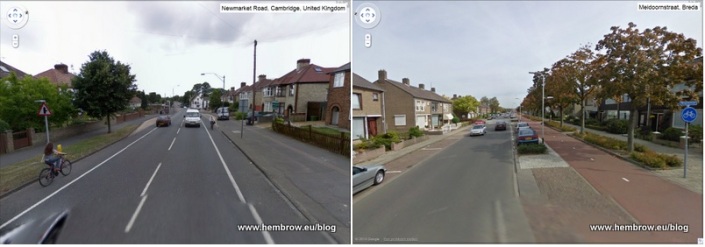
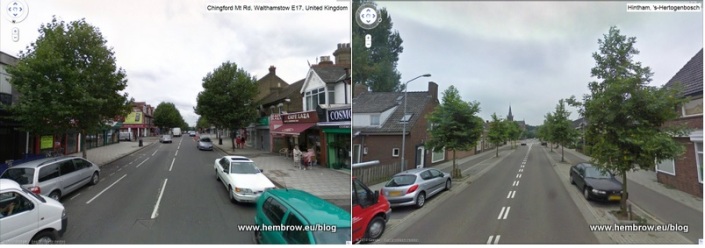
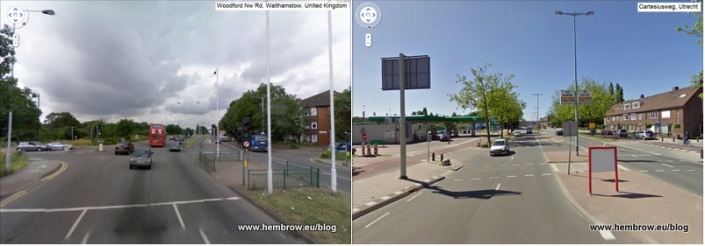
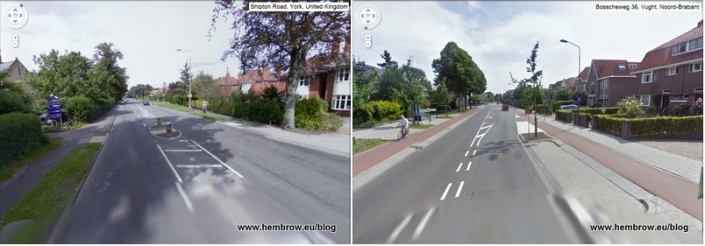
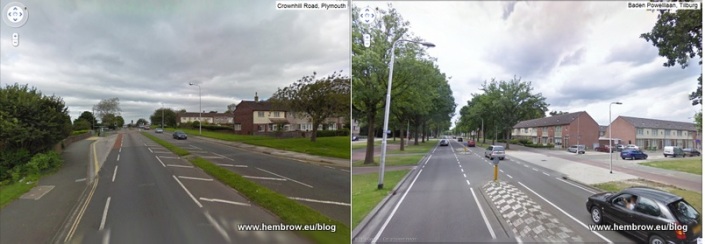
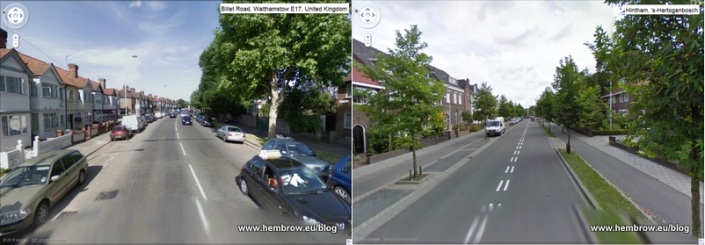
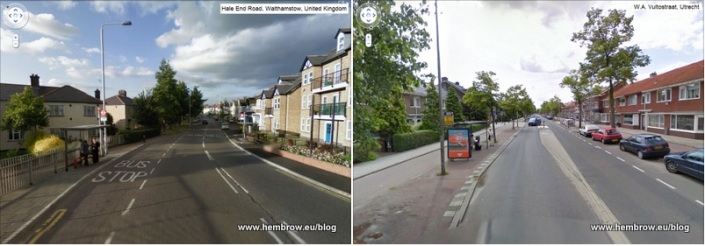

In each case, the cycling provision in the UK is rubbish or non-existent, while that provided on a similar street in The Netherlands offers a far superior cycling experience. Of course, if cycle lanes were better then more people would cycle, and if more people were riding bikes then there would be fewer cars on the road and so less congestion and less pollution. Everyone benefits, right?
The following video explains how the Dutch got their cycle paths, and how their cities made the transition from being car-centric to being more bicycle friendly.
What the Dutch have achieved is truly remarkable, and this is why I always hold them up as the best example for the UK to follow. They are the only country in the world able to boast the fact that more than a quarter of all their journeys are made by bike, and it would be my dream come true if we could achieve this feat in the UK.
Related articles
- Making cycle lanes safe (cyclingnelly.wordpress.com)
- Crosspost: Cyclists and pedestrians as ‘hazards’ for motorists. #wordlturnedupsidedown #takecaregtrmcr (manchesterclimatemonthly.net)
- No, it’s not the narrowest cycle path in Britain! (cyclingnelly.wordpress.com)
- Only 10 fines for illegal cycle lane parking (belfasttelegraph.co.uk)
London Cyclists stage mass ‘die-in’
Following the recent deaths on London’s busy streets, cyclists in the capital held a vigil and protest outside the headquarters of TfL (Transport for London). Despite the cold we lay down next to our bikes and made a pretty bold statement that TfL can no longer ignore.

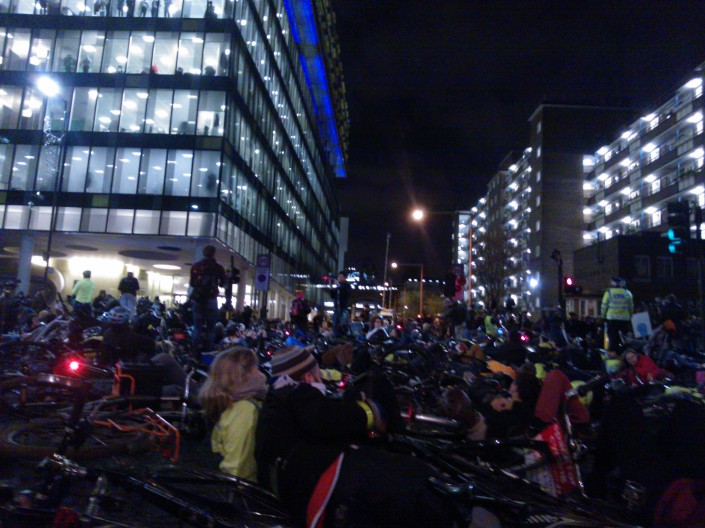
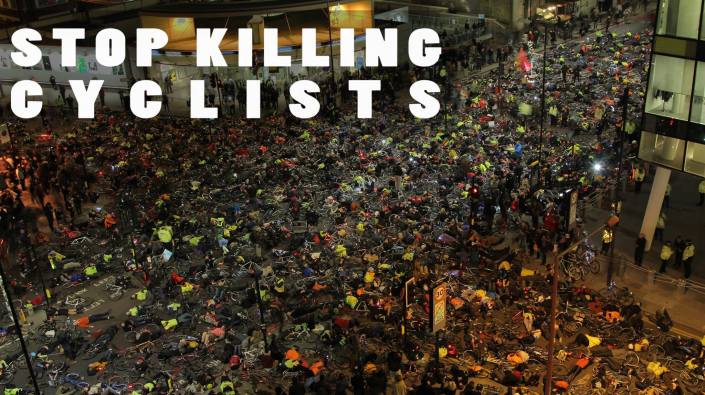
London’s die-in was reminiscent of the famous Dutch die-in that took place in the 1970s on the museumplein outside the Rijksmuseum.

The Dutch campaign was motivated by the number of people (particularly children) who were dying on the roads. Their protest achieved remarkable things in terms of their infrastructure, and 40 years down the line they are still reaping the benefits.
Dutch solutions to London’s problems aren’t really so radical, and their implementation would only requires a modest degree of commitment from the government.
Look at how they deal with HGVs and roundabouts – surely this sort of infrastructure is desirable for everyone, no?
On a side note, my sister was interviewed by the BBC during the protest, and her vox-pop even made it onto the evening news! I will try to upload a video, if I can find one…

And the BBCs coverage of the event (my sister at 1:04)…
and another one…
Related articles
- Cyclists lie outside Transport for London (TfL) headquarters to protest road deaths (express.co.uk)
- Thousands of cyclists lie down in the road for rush hour protest outside TfL’s Blackfriars HQ (standard.co.uk)
- http://www.huffingtonpost.co.uk/2013/11/29/stop-killing-cyclists_n_4361265.html?utm_hp_ref=uk
- http://www.bbc.co.uk/news/uk-england-london-25160874
- http://www.cyclingweekly.co.uk/news/latest/541453/cyclists-stage-mass-die-in-outside-transport-for-london-offices.html
8 radical ways to protect cyclists
Link Posted on Updated on
8 radical ways to protect cyclists
The BBC have posted an article proposing 8 different ways of protecting people on bikes.
Interestingly, instead of simply copying the exemplary Dutch solution, they suggest wacky and impractical things like ‘elevated cycle routes’ and ‘body armour’ for cyclists.
How about strict liability laws and a better network of segregated cycle paths? Come on guys, they’ve shown us how it works on the Continent, it’s about time we stopped farting about with pie-in-the-sky ideas and got our act together.
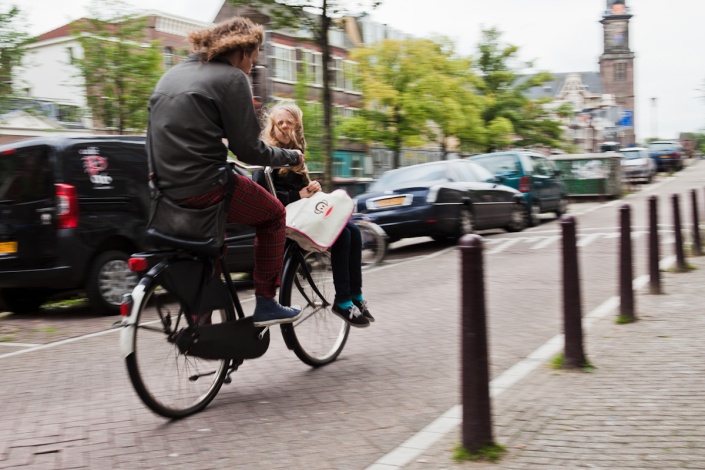
Related articles
Upgrade London’s CS2 to Continental Standards – call to arms
Link Posted on Updated on
Upgrade London’s CS2 to Continental Standards – call to arms
Five cyclists have died in the last nine days on the streets of London.
People are justified in their anger that cycling infrastructure is too sporadic to offer any effective protection. Please help by sending a message to London’s mayor to let him know how you feel.
Coverage from the BBC paints a fuller picture
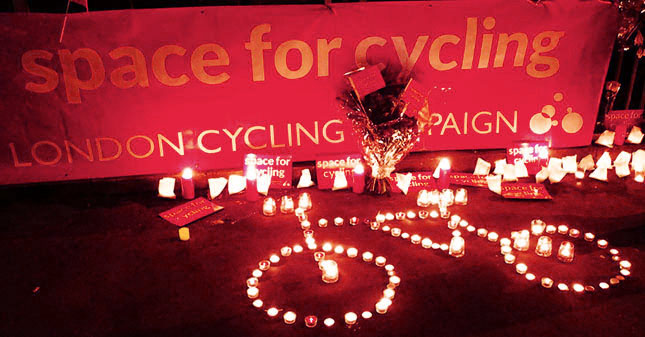
Related articles
- Cycle deaths leave London bewildered (bbc.co.uk)
- Cyclist killed on cycle superhighway (bbc.co.uk)
- Boris Johnson called on for cycle superhighway safety measures after Bow cyclist death (express.co.uk)
- One Step Forward, Two Steps Back: What Next for Cycle Safety in London? (sustainablecitiescollective.com)
100 miles of Dutch-Style Bike Lanes planned for Bristol
Link Posted on Updated on
100 Miles of Dutch-Style Bike Lanes for Bristol
In a bid to save lives and reduce the fear factor preventing people from taking to two wheels, Bristol is to announce radical new proposals which will make it Britain’s first city to adopt a truly Dutch-style network of cycle lanes.
Already the UK’s top cycling city with an estimated 16,000 regular cyclists, the 100 miles of cycle paths are due to be operational as soon as Spring 2014!
In contrast to this fantastic news, the national picture is comparatively bleak. With cycle uptake ever on the increase, the number of cyclists killed or injured on Britain’s roads is at its highest for three years: 118 deaths and 3,222 injuries recorded in 2012. Although these figures represent regrettable injuries and tragic loss of life, statistics like these are what motivated the Dutch to unite as a nation and demand the changes that led to their precedent-setting infrastructure.
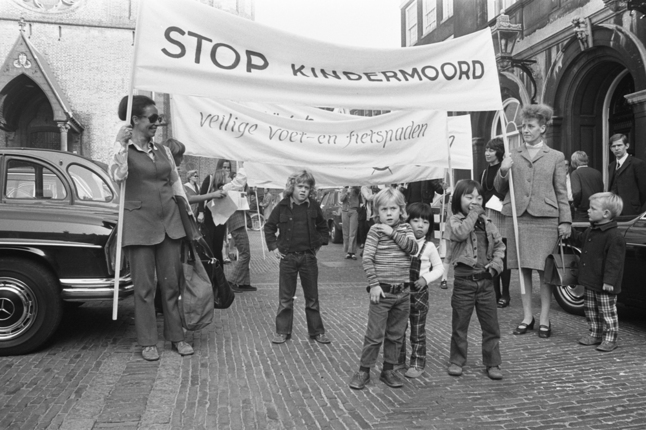

In other (related) news, a new peer-reviewed study has revealed that financial investment in cycling infrastructure can increase the share of journeys taken by bike. This might seem like the predictable answer to another do-bears-poop-in-the-woods sort of question, but it’s not always cut-and-dried that spending to achieve a goal actually works. Look at roadbuilding, for instance: billions of pounds are pumped into constructing new roads in order to reduce congestion, yet congestion keeps on increasing.
Ridiculous, unnecessary, and obvious as it seems, it’s still good press. Click here for the Guardian article.

Related articles
- Dutch-style bike lanes set for roll-out in Bristol – Britain’s cycling capital (independent.co.uk)
- City’s ‘Dutch-style’ bike lane plans (bbc.co.uk)
- Move over Amsterdam, the London cycling revolution is in top gear (standard.co.uk)
- New Denver Bike Lanes Not Only Safer, Good For Business (denver.cbslocal.com)

